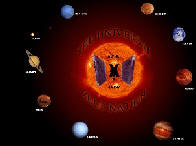



Invisible
Black Man
Dr. Mark Dean
http://www.math.buffalo.edu/mad/PIX/dean.mark.gifhttp://www.math.buffalo.edu/mad/PIX/dean.mark.gif
"America's High Tech "Invisible Man"
By Tyrone D. Taborn
You may not have heard of Dr. Mark Dean. And you aren't alone. But
almost everything in your life has been affected by his work.
See, Dr. Mark Dean is a Ph.D. from Stanford University. He is in the
National Hall of Inventors. He has more than 30 patents pending. He is
a vice
president with IBM. Oh, yeah. And he is also the architect of the
modern-day
personal computer. Dr. Dean holds three of the original nine patents on
the
computer that all PCs are based upon. And, Dr. Mark Dean is an African
American.
So how is it that we can celebrate the 20th anniversary of the IBM
personal computer without reading or hearing a single word about him?
Given all of the pressure mass media are under about negative portrayals
of African Americans on television and in print, you would think it
would be a slam dunk to highlight someone like Dr. Dean.
Somehow, though, we have managed to miss the shot. History is cruel
when it comes to telling the stories of African Americans. Dr. Dean isn't
the first Black inventor to be overlooked. Consider John Stanard,
inventor
of the refrigerator, George Sampson, creator of the clothes dryer,
Alexander Miles and his elevator, Lewis Latimer and the electric lamp.
All of these inventors share two things:
One, they changed the landscape of our society; and, two, society
relegated them to the footnotes of history. Hopefully, Dr. Mark Dean
won't go away as quietly as they did. He certainly shouldn't. Dr. Dean
helped start a Digital Revolution that created people like Microsoft's
Bill Gates and Dell Computer's Michael Dell. Millions of jobs in
information technology can be traced back directly to Dr. Dean.
More important, stories like Dr. Mark Dean's should serve as
inspiration for African-American children. Already victims of the
"Digital Divide" and failing school systems, young, Black kids might
embrace technology with more enthusiasm if they knew someone like
Dr. Dean already was leading the way.
Although technically Dr. Dean can't be credited with creating the
computer -- that is left to Alan Turing, a pioneering 20th-century English
mathematician, widely considered to be the father of modern computer
science -- Dr. Dean rightly deserves to take a bow for the machine we
use today. The computer really wasn't practical for home or small
business use until he came along, leading a team that developed the
interior architecture (ISA systems bus) that enables multiple devices,
such as modems and printers, to be connected to personal computers.
In other words, because of Dr. Dean, the PC became a part of our daily
lives.
For most of us, changing the face of society would have been enough. But
not
for Dr. Dean. Still in his early forties, he has a lot of inventing
left in him.
He recently made history again by leading the design team responsible for
creating the first 1-gigahertz processor chip. It's just another huge
step in
making computers faster and smaller. As the world congratulates itself
for
the new Digital Age brought on by the personal computer, we need to
guarantee that the African-American story is part of the hoopla
surrounding
the most stunning technological advance the world has ever seen. We
cannot
afford to let Dr. Mark Dean become a footnote in history. He is well
worth
his own history book.
